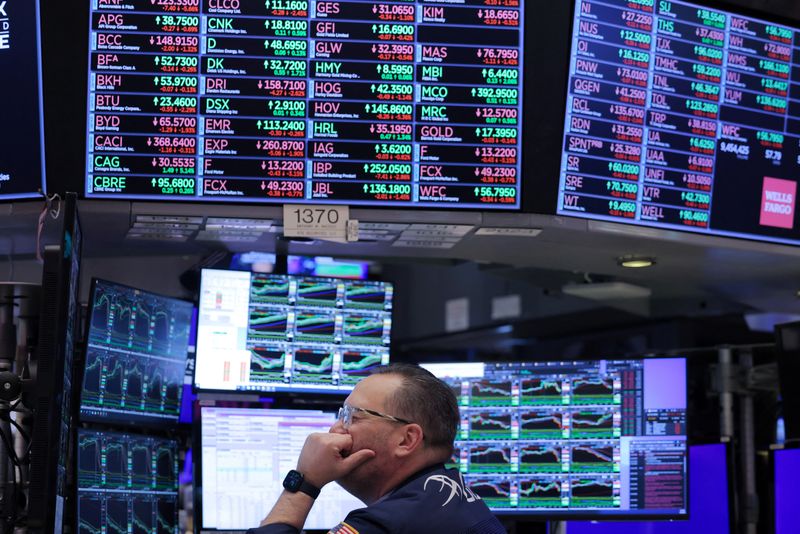By Yasin Ebrahim
Investing.com — Business development companies, or BDCs, have been taking the investment world by storm as income-seeking investors clamor into this asset class that has earned a reputation for generating attractive dividend-like returns by filling the middle-market funding gap left by traditional banks.
The BDC sector has seen significant growth, according to a recent Jefferies report, with total assets under management increasing from $12 billion in 2000 to over $260 billion by 2023.
What Are Business Development Companies?
A BDC is an investment company that typically invests in the middle market industry with a focus on smaller private companies, or those generating about $5 million to $100 million in earnings before interest, taxes, depreciation, and amortization (EBITDA). BDCs primarily provide debt funding in the form of senior secured loans, but their investment strategy can be more diverse.
BDCs receive coupon payments on debt, or loans provided and various fees from borrowers, which are then distributed to investors. While debt funding is their primary focus, BDCs can also invest in equity capital. When shares of these equity investments appreciate, BDCs may sell them for additional returns. BDCs are required to distribute around 90% of their investment income to investors, typically in the form of dividends.
The origin story of BDCs dates to the 1980s, a period that followed the financial crisis of the late 1970s that led to increased regulation and compliance, forcing banks to tighten lending standards and leaving middle-market companies struggling to access debt capital.
Congress was forced into action, creating the Small Business Incentive Act of 1980 to “encourage private equity firms to provide that debt capital to these middle-market companies,” Dan Trolio, Chief Financial Officer of Horizon Technology Finance (NASDAQ:), told Investing.com’s Yasin Ebrahim in a recent interview.
As well as a decreasing in bank lending, smaller companies are staying private for longer and tend to rely on debt capital to fund their growth.
Private Vs. Public: Liquidity Matters
BDCs aren’t all created equally; some are more liquid than others.
Publicly traded BDCs, which trade on public stock exchanges like Nasdaq, sit at the top of the liquidity scale. In contrast, private BDCs mirror typical private equity fund structures with returns distributed at the end of an investment cycle and tend to be less liquid. Perpetual BDCs fall somewhere in between public and private BDCs, offering investors the opportunity to redeem investments during specific periods known as redemption windows.
Buying the stock of a publicly traded BDCs allows investors to gain exposure to the underlying assets and receive income generated from those assets.
“When you buy our stock, you are getting a very small piece of every one of those loans spread out across the portfolio, and then you’re receiving monthly or quarterly distributions of our income in the form of a dividend,” Trinity Capital Chief Executive Kyle Brown told Investing.com.
High Returns From Plugging the Middle-Market Funding Gap
The distributions or dividend yields generated typically range from high-single digits to mid-teens income, so it’s unsurprising that investors are turning to BDCs for their income fix.
The returns generated from the underlying assets of BDCs, primarily senior secured loans, “range for some BDCs in the high single digits to mid-teens type gross yields,” Brown said.
But just how are BDCs able to generate these attractive returns?
Leverage: Most BDCs leverage their equity or pool of capital raised. This amplifies the yield they can offer investors by borrowing at a lower interest rate and then lending it out at a higher rate to their portfolio companies.
BDCs are legally allowed to borrow up to two times their equity base; for every $1 of equity, they can borrow up to $2. However, Brown added that for most BDCs, including Trinity Capital Inc (NASDAQ:), leverage is around one-to-one.
“That leveraged return is why the yields are a little bit higher,” Brown added.
Fees: While leverage provides a critical boost to returns, fees charged to borrowers also contribute significantly.
Fees charged to the borrower can vary by BDC and may include up-front commitment fees at the beginning of a loan, prepayment fees if a borrower pays off a loan early, or back-end fees charged at the end of a loan or upon certain event.
“We [Horizon Technology Finance] have a specific unique product where we are getting a current pay coupon,” Trolio said. “We get a commitment fee up front and we get fees on the back end. All in, we are usually within a band of about 11% to 14% of income if a company made every payment from day one to month 60.”
Internally managed BDCs have resources to manage investments directly rather than outsourcing them. This allows them to generate additional income by managing third-party capital.
“Our BDC and some other internally managed BDCs including Hercules and Main Street have additional funds under management that our investors benefit from because we can charge management fees and incentive fees on other pools of capital,” Brown said.
While hefty dividend income is appealing, seasoned investors know that risk always needs consideration before looking at any asset class.
Understanding the Risks: What Every BDC Investor Should Know
When investing in debt instruments, credit risk must be managed. As BDCs may invest across various companies from venture-backed startups to late-stage firms, investors need to be aware that risk levels may vary significantly.
Horizon Technology Finance invests in development stage companies in life science and technology sectors, often with negative EBITDA due to high cash burn rates. While these investments carry higher risk compared to companies with positive EBITDA, the returns associated with venture-debt investments are often higher to compensate for this increased risk.
It also helps to adopt a proactive management approach to identify any potential problems, Trolio said.
“We are looking at each one of our companies on a monthly basis, conduct quarterly portfolio reviews, and really dig into each one of the companies, their cash position, their performance, the sponsors, the management team…and really try to stay ahead of that,” he added.
For publicly traded BDCs, which are subject to SEC reporting requirements, the “biggest risk” lies in valuations, Brown said. As publicly traded BDCs are required to value their assets on a quarterly basis, short-term economic changes could affect valuations, which impacts the stock of the BDCs even “if the ability to collect on the loan may have not been diminished,” he added.
But for investors whose primary goal is generating income, fluctuations in valuations aren’t as concerning compared to those looking to ‘time the market.’
“If you’re an investor looking for yield and income,” Brown added, “this probably doesn’t affect you as much because you’re going to stay invested; you’ll continue collecting your dividend while watching valuations fluctuate.”
“But if you’re trying to get in and out of stock,” he cautioned, “market timing might be an issue because valuations could be down.”
Risk To BDCs From Lower Interest Rates or Recession?
As the Fed kicks off a rate-cutting cycle, many investors worry that income derived from loans —typically set to float above a benchmark rate such as SOFR—could come under pressure.
This raises concerns about the high dividends offered by BDCs.
While the yield on these debt investments managed by BDCs may decrease with falling rates, borrowing costs also decline, helping to cushion the impact on margins.
“Most BDC base dividends aren’t at significant risk from Fed rate cuts,” Jefferies said in a recent note. There are several mitigating factors including accelerating originations and refinancing fees, improving credit performance, Jefferies highlighted, that should help BDCs maintain dividend coverage.
In an anticipation for further rate cuts, the leveraged loan Index default rate saw a modest drop this year, S&P Global said, and could remain near 1.50% through June 2025, from 1.55% as of June 2024.
While lower interest shouldn’t “dramatically impact BDCs,” Brown stressed that it is “important for investors to look at individual BDCs” and understand their underlying assets along with performance during varying economic and interest cycles—including the zero-interest rate period.
The Art of Deal Origination
As the number of funds grow within BDCs, their ability to source quality investment opportunities can give them an edge over competitors. “It’s critical, absolutely” Trolio said of deal sourcing, emphasizing the importance for BDCs “to put high quality assets onto the balance sheet.”
“Sourcing deals effectively allows us not only access but also enhances our competitive advantage,” he added. A long-standing management team is a crucial makeup of a successful BDC because it gives “market access” to origination opportunities.
To BDC or Not To BDC?
Whatever the economic or interest rate cycle, due diligence remains essential for investors considering which BDCs to invest in.
For investors looking at BDCs, “you really want to focus on is the management team,” Trolio said, and question “how long they have been in the industry, and do they understand the market?”
When assessing the dividend yield of a BDC, Trolio believes it’s critical for retail investors to understand how a BDC has been able to generate income to cover that dividend over time, what is the strength of their portfolio to continue to cover that dividend and how have they grown over the years?
The access provided by BDCs to private credit opportunities and opportunity to build income suggest that this asset class isn’t likely to run out of steam any time soon.
“I think the outlook going forward is that capital will continue to flow, Trolio said, touting ongoing optimism about the future of BDCs. “We’ll see more activity and companies that have been able to cut their costs and maintain a high enterprise value.”
Read the full article here















